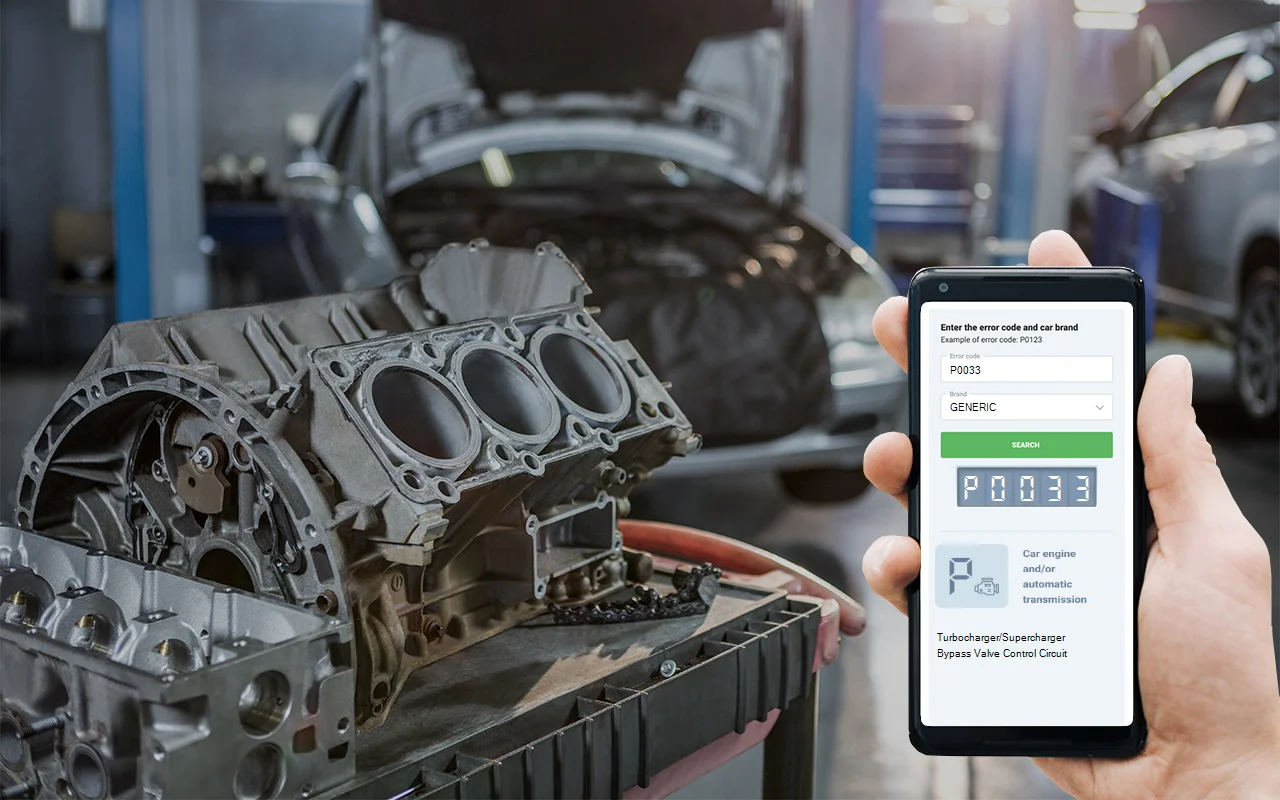When you see that P0033 code pop up, let me break down what’s happening based on years of wrenching on these systems. The vehicle’s PCM-basically the main computer-has picked up on something odd in the turbocharger bypass valve control circuit. If you’re driving a turbocharged or supercharged ride, this valve is your pressure relief: it opens up to dump excess boost when you suddenly get off the throttle, saving your turbo from taking a beating. The PCM constantly checks the voltage heading to and from this valve, and if that signal strays out of the expected range, you get a P0033. This valve plays a critical role in keeping your boosted engine healthy, making sure you don’t end up over-pressurizing the system and risking expensive damage.
DTC P0033
Main Causes of obd2 code P0033
From my time in the bay and flipping through countless service manuals, here’s what I’ve found usually triggers a P0033:
- A worn-out or stuck turbocharger bypass actuator (that’s the gizmo moving the valve)
- A faulty turbocharger bypass valve
- Vacuum line issues-anything from brittle, cracked hoses to ones that have popped off their fittings
- A misbehaving boost pressure sensor
- Electrical gremlins-broken wires, corroded connectors, or loose plugs in the bypass valve circuit
- On rare occasions, a glitch in the PCM itself
Nine times out of ten, you’ll be looking at the actuator or valve, but don’t overlook the basics like vacuum lines and wiring. I’ve seen plenty of cars come in with an obvious split hose that gets missed when folks rush to blame the fancy parts.
Recognizing P0033 engine code Symptoms
If you’re dealing with a P0033, there are some telltale signs that usually show up. That check engine light is a dead giveaway, but often you’ll notice your car just doesn’t have its usual zip-almost like the turbo’s gone on vacation. Sometimes, the engine will drop into limp mode, which is a safety net the computer throws to keep things from getting worse, but it leaves you with sluggish acceleration. If you’re used to that satisfying turbo shove and it’s suddenly missing, that’s your cue. Don’t wait around; if you spot these symptoms, get the code checked out before it turns into a bigger headache.

How to Diagnose P0033 trouble code
Here’s my go-to routine for tracking down a P0033, and if you’re handy with tools, you can tackle a lot of this yourself. First thing, pop the hood and give all the vacuum lines and wiring around the bypass valve a close look-cracked hoses, frayed wires, or loose plugs are common troublemakers. Pro-tip from the garage: have a buddy rev the engine while you watch the bypass valve to see if it’s actually moving. Next, I’ll hook up a scan tool to pull any related codes and watch the valve’s data. If everything looks normal, I move on to testing the actuator-using a handheld vacuum pump for the vacuum-operated types or checking for proper voltage at the connector if it’s an electric setup. Don’t forget to inspect the boost pressure sensor and its harness, since a bad reading there can cause all sorts of false alarms. If you’ve ruled out all the obvious stuff and the code still won’t clear, you might be looking at a rare PCM issue-but honestly, that’s usually a last resort after everything else checks out.

Avoiding Common Mistakes with P0033
A classic mistake I see is folks immediately swapping out the bypass valve or actuator without even glancing at the vacuum lines or connectors. Overlooking a simple split hose or a barely-connected plug can send you on a wild (and expensive) goose chase. Another pitfall is not checking for additional trouble codes that could point to the actual fault elsewhere in the turbo system. My advice? Always start with the basics-don’t skip the easy, obvious checks before you start throwing parts at the problem.

How Serious is obd code P0033
Let me be blunt: you don’t want to let a P0033 slide. If the bypass valve isn’t doing its job, you’re risking too much pressure in your turbo setup, and that can tear up your turbocharger, split hoses, or even cause engine damage if it spirals out of control. Driving around with limp mode engaged or reduced power isn’t just annoying-it can leave you stranded in a bad spot or make it impossible to merge safely onto the highway. My advice? Don’t gamble with this one. The longer you wait, the bigger the risk and the repair bill.
Repair Solutions for dtc P0033
Here’s what’s worked best for me and other techs when fixing a P0033:
- Swapping out a faulty turbocharger bypass valve or actuator
- Repairing or replacing any cracked or leaking vacuum lines
- Sorting out wiring or connector problems in the bypass valve circuit
- Installing a new boost pressure sensor if the old one’s toast
- In rare cases, flashing or replacing the PCM
Start with the simple stuff-vacuum lines and connectors-before reaching for pricey parts. You’d be surprised how often the fix is quicker and cheaper than you’d expect.
Conclusion
If you’re staring down a P0033 code, you’re dealing with a turbo bypass valve that’s out of whack, and that can quickly lead to everything from weak performance to serious engine trouble. My advice? Get on it fast-check the vacuum lines and wiring first, and only move to part replacements if you know you’ve found the real culprit. Don’t drag your feet; acting now is the best way to keep your car running strong and save yourself from a costly repair down the line.




